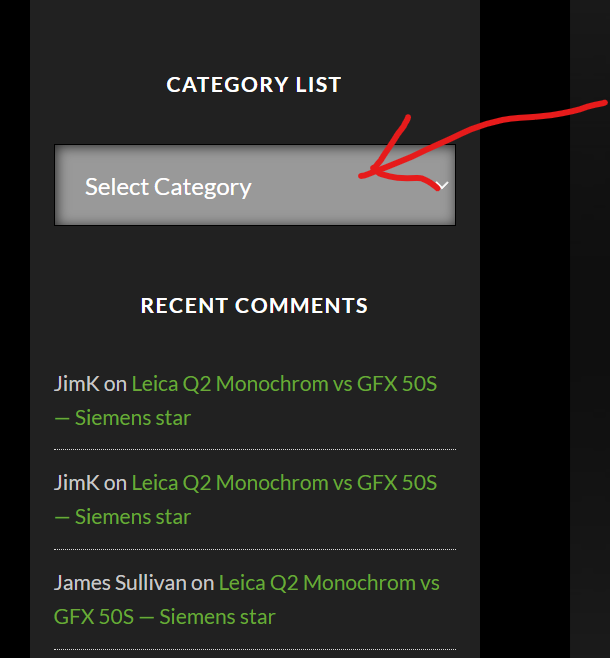This is the 19th post in a series about the Leica Q2 Monochrom. You can see all the other posts in the series by looking in the Category List drop-down menu on the right side of the page.
With the Q2 Monochrom, Leica doesn’t have to worry about bad color. So I thought maybe they’d not have such an aggressive hot mirror as most cameras. I got a 49mm R72 (720nm IR passing) filter, and put it on the camera. With the lens wide open at 30 seconds exposure and ISO 12500, the finder was completely black when I aimed the camera at sunlit foliage.
So I guess the answer is no, you can’t do IR with an unmodified Q2 Monochrom. Maybe Leica has an aggressive hot mirror to make the job the lens has to do easier. Maybe you could get something to register if you used exposures of several minutes.
Jack Hogan says
There is black and white and then there is black and white. How to define it?
Let’s say B&W is luminance, the achromatic signal in the second stage of the HVS. Then in daylight we would want aggregate spectral filtering over the sensor that approximates the photopic Luminous Efficiency Function. It would probably work in the dark just as well because we typically look at rendered captures in photopic conditions.
JimK says
I agree that the photopic spectral curve is probably a good place to start for a monochromatic sensor intended to be used without a filter. However, film did not faithfully adhere to that standard. Even film identified as panchromatic did not. I remember people selling filters that you’d screw onto the front of your spotmeter to make the meter’s spectral response closer to that of Tri-X.
And, of course, there is a long tradition of modifying the spectral sensitivity curves of B&W film with filters. In fact, I think in the film era, I made many more B&W landscapes with filters than without filters.